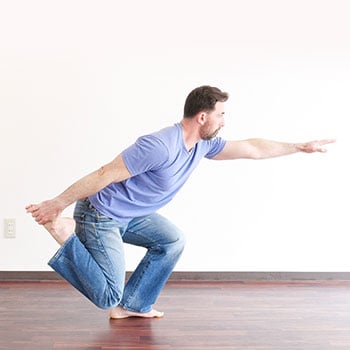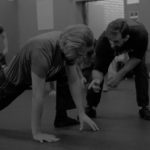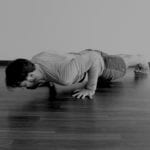When you started working on the handstand about a year ago, at first, things were going great. You started with the first progression and kept going, breezing through progression after progression. Until you stopped.
For the past couple of months, you’ve been stuck, and you don’t feel like you’re getting any closer to your goal.
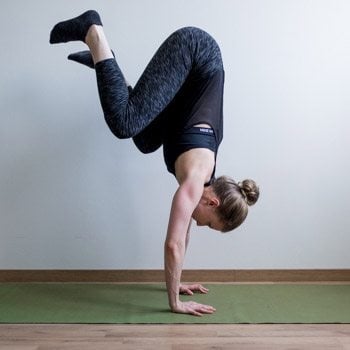 What could you possibly be doing wrong? You’re following the progressions you found online, exactly as they’re laid out. They seem to have worked really well for other people. Why is this just not working for you?
What could you possibly be doing wrong? You’re following the progressions you found online, exactly as they’re laid out. They seem to have worked really well for other people. Why is this just not working for you?
I’ll let you in on a little secret: Everyone who’s worked on building bodyweight skills has been exactly where you are.
Maybe not with the handstand, but with whatever skills they’ve worked to achieve. Progress is not linear, and 99% of people come to a point with a skill they’re working to build where they get stuck.
Our method of teaching skills accounts for the natural ups-and-downs you will undoubtedly face.
In this article, I’ll talk about why skill progressions don’t work the way most people think they do, and I’ll share our method for building skills–an option that will help you feel less frustration, while making the progress you want toward your goals.
How People Think Bodyweight Progressions Work (and Why They Really Don’t Work That Way)
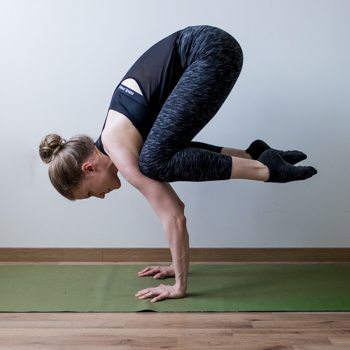 There’s a natural tendency to think of progress as the cumulative effects of one step, followed by another, followed by another, until you reach the end-goal.
There’s a natural tendency to think of progress as the cumulative effects of one step, followed by another, followed by another, until you reach the end-goal.
When you see impressive accomplishments, especially from someone you respect, you might assume they followed logical, step-by-step progressions and programming that helped them achieve the results you see.
In many ways, that assumption is correct, but it’s only a small part of a much bigger picture.
You’ve probably seen some variation of this image before:

It’s a pretty good representation of how progress really happens. Progress is a winding, zig-zaggy road with lots of switchbacks and detours along the way–yes, even for your biggest role models.
When it comes to skill development, there’s no question it’s important to follow logical, step-wise progressions.
But what isn’t talked about nearly enough are the realities of each of those steps. There’s quite a lot that goes on between each step. Some parts of the journey are simple and quick, while others seem to take forever before you gain any forward motion.
And that’s a natural part of skill development.
Unfortunately, instead of accounting for this, most training programs or in-person trainers try to force their clients into an unyielding and strict program where they are told they must absolutely follow a certain progression order and hit their required numbers before moving on.
How does that make any sense?
- What about when you have consistently put in the effort and time, and you’re still not getting anywhere?
- What if that “perfect” plan of progressions just isn’t appropriate for you?
The answer is much more complex than being told to simply keep going. It’s not that everyone is different and needs a specific individual program. I’m not saying that at all.
What I am saying is that there are varying individual responses to training and that set-in-stone expectations are flat out wrong.
For example, the gap between progressive exercises may be too difficult to bridge, and while there may be no magic in-between progression to do, there are likely various supplemental exercises that will address the weaknesses that are holding you back.
Also, individual differences may mean one level of progression is more difficult than the one “above” it. And if the person were discouraged from even trying it, then they’d be held back for no good reason.
Clearly, this rigid way of looking at progress and of approaching skill development isn’t working. It’s time to try things another way.
A Better Way to Build the Skills You Want
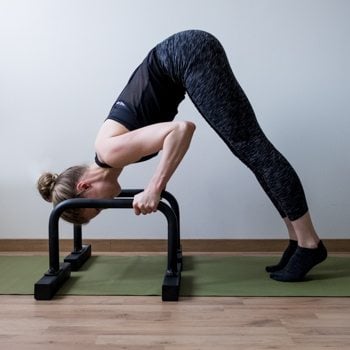 At this point, you may be wondering how you can possibly structure your training to accommodate the natural dips in progress you’ll face. If you’ve seen our many free training tutorials, which tend to follow a step-by-step structure, this question may be even stronger in your mind.
At this point, you may be wondering how you can possibly structure your training to accommodate the natural dips in progress you’ll face. If you’ve seen our many free training tutorials, which tend to follow a step-by-step structure, this question may be even stronger in your mind.
It’s a good question, but one with a fairly simple answer.
The way we teach skills (in our free tutorials, as well as our paid programs) is by building progressively complex skills on top of simpler skills, while emphasizing complementary exercises to fill in the gaps between progressions.
The first part of this concept—building progressively complex skills on top of simpler skills—is not new, and any quality program should follow this structure. But the distinction lies in the second part of this concept—while emphasizing complementary exercises to fill in the gaps between progressions.
Let me give you a couple of examples of how this works.
1. The L-Sit
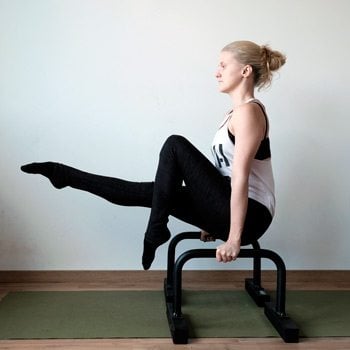 In our Integral Strength program, we teach many skills involving pressing and inversion, one of which is the L-Sit.
In our Integral Strength program, we teach many skills involving pressing and inversion, one of which is the L-Sit.
The L-Sit is a skill many people struggle with, because it requires a lot of strength and control throughout the body. The way we teach the L-Sit in IS, however, is by doing two things:
- Working up to the full L-Sit through logical progressions, starting with the tuck hold.
- Making sure the exercises you’re practicing alongside the L-Sit progressions are complementary, and will help you achieve the skill.
The primary areas of the body that need to be strong and controlled in order to get a solid L-Sit are the core, lats, triceps, and quads.
We program exercises alongside the L-Sit progressions to strengthen these areas, so that, even when you hit a lag in your L-Sit progress, you’re still strengthening the areas that will help you achieve the L-Sit.
As you continue to improve your strength in those areas, your L-Sit will continue to improve over time–even if you have a week or two where it doesn’t feel that way.
2. The Muscle-Up
 The muscle-up is a tough skill that a lot of people get stuck on. Even if you have the strength to do pull-ups and dips, that doesn’t always translate into smooth muscle-ups.
The muscle-up is a tough skill that a lot of people get stuck on. Even if you have the strength to do pull-ups and dips, that doesn’t always translate into smooth muscle-ups.
Similar to our approach to the L-Sit in IS, we teach the muscle-up by doing the following two things:
- We include stepwise progressions that help you work up to the muscle-up.
- We recommend complementary exercises, such as pull-ups, dips, top position, reverse rows, and other complementary skills that eventually lead up to muscle-ups in a much less frustrating manner than if you were to spend all of your energy just working on the muscle-up.
By training in this manner, you’ll continue to make progress toward the muscle-up, even if you hit a bump in the road with the standard progressions.
Rather than having a specific series of progressions as the only method of working on a skill, it’s much better to follow an organized plan composed of several elements that work together to help you move closer to your goals.
It seems like a straightforward idea, but you may be surprised at how many programs and routines aren’t designed this way.
Smart Bodyweight Progressions Account for the Ups-and-Downs You’ll Face in Your Training
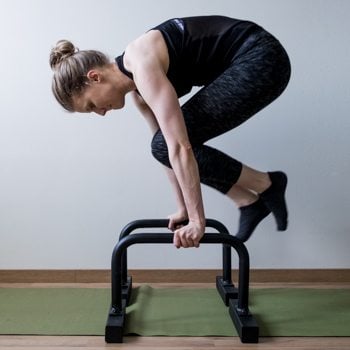 If you’ve been stuck on a particular skill for a while, despite following step-by-step progressions, it’s time to change your approach.
If you’ve been stuck on a particular skill for a while, despite following step-by-step progressions, it’s time to change your approach.
We’ve worked with thousands of clients on building all sorts of bodyweight skills, and we’ve developed our method of skill acquisition to account for the natural ups-and-downs that come with the territory.
All of our skill-based programs share this methodology, but if you’re looking to change your approach to skill-building, our Integral Strength program is a good place to start.
You’ll build essential well-rounded strength that will prepare you for many skills, including L-Sits, broad jumps, shrimp squats, chin-ups, and more.
Through smart exercise programming, you’ll continue building the skills you want, even when you hit the natural bumps in the road that come with standard skill progressions.
Build Skills the Smart Way
Integral Strength will help you build the kind of strength that carries over into demanding physical skills and dynamic sports. All you need is a pull-up bar and a bit of floor.

